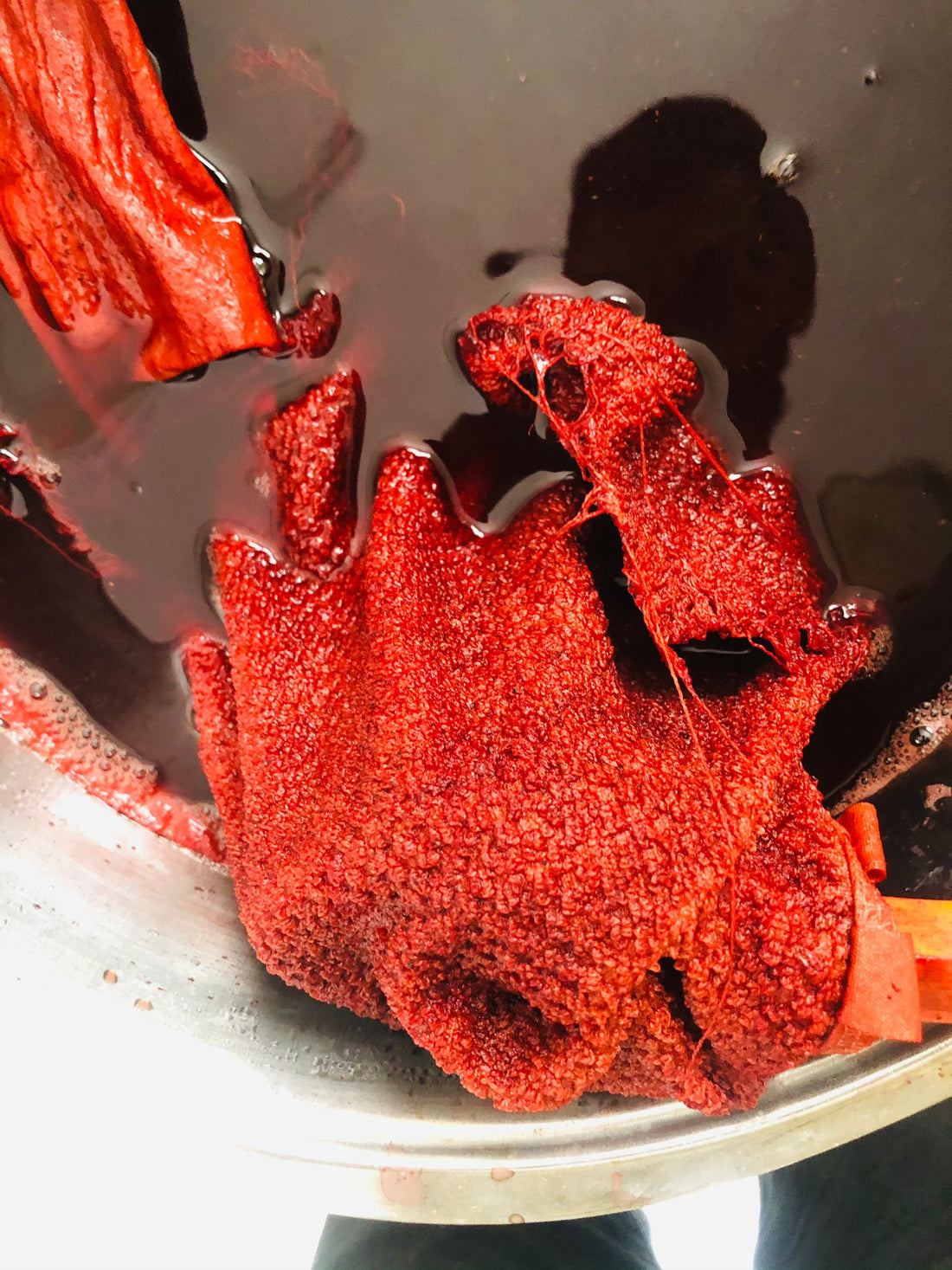
A Guide to Mordanting Cellulose Fibres: Cotton and Linen
Introduction to Mordanting Cellulose Fibres:
Cellulose fibres, such as cotton and linen, are widely used in textile arts and crafts. However, unlike protein fibres like wool and silk, cellulose fibres require special treatment to achieve optimal dyeing results. Mordanting is a crucial step in dyeing cellulose fibres, as it helps the fibres to absorb the dye more efficiently and improve the colour fastness of the final product.
Understanding the Importance of Mordanting:
Mordanting is the process of treating fibres with a metallic salt, which acts as a fixative for the dye. The mordant creates a chemical bond between the dye and the fibre, resulting in a longer-lasting and more vibrant colour. Mordanting also helps to prepare the fibre for dyeing by removing any impurities or residues that may interfere with the dye uptake.
Choosing a Mordant for Cellulose Fibres:
There are several types of mordants that can be used for cellulose fibres, including alum, tannin, and aluminum acetate. Alum is a commonly used mordant for cellulose fibres, as it is readily available and produces good results. Tannin can also be used in conjunction with alum to enhance the depth and richness of the colour. Aluminum acetate is another option for mordanting cellulose fibres, as it is quick and easy to use, but it may not produce as vibrant colours as other mordants.
Step-by-Step Guide to Mordanting Cellulose Fibres:
-
Scour the Fibres: Before mordanting, it is important to thoroughly wash and scour the fibres to remove any impurities or residues.
-
Prepare the Mordant Solution: Dissolve the mordant in hot water according to the manufacturer's instructions. The amount of mordant used will depend on the weight of the fibres and the desired intensity of the colour.
-
Soak the Fibres: Immerse the pre-wetted fibres into the mordant solution, making sure that they are fully submerged. Stir the fibres occasionally to ensure even distribution of the mordant.
-
Heat the Mordant Bath: Gently heat the mordant bath to just below boiling point and maintain this temperature for about an hour. Avoid boiling the fibres, as this can damage them.
-
Rinse and Dry the Fibres: Once the mordanting process is complete, rinse the fibres thoroughly in warm water until the water runs clear. Squeeze out excess water and hang the fibres to dry.
Tips for Successful Mordanting of Cellulose Fibres:
- Use a stainless steel or enamel pot for mordanting, as some metals can react with the mordant and affect the colour.
- Avoid using too much mordant, as this can cause the fibres to become brittle and break.
- Experiment with different mordants and dye combinations to achieve unique and interesting results.
- Always wear gloves and protective gear when working with mordants, as they can be harmful if ingested or absorbed through the skin.
Conclusion
Mordanting cellulose fibres is an important step in achieving vibrant and long-lasting colours when dyeing cotton, linen, and other plant-based fibres. The traditional three-step process using alum, tannin, and alum again can be time-consuming, but it is highly effective. Alternatively, using aluminium acetate can be a quicker option. Whichever method you choose, it is crucial to properly scour the fibres beforehand to remove any dirt and grease.
By following the steps outlined in this article and taking the necessary safety precautions, you can successfully mordant your cellulose fibres and achieve beautiful, colourfast results in your natural dyeing projects. Remember to experiment with different mordants and dye combinations to discover unique and interesting effects.
Happy dyeing!